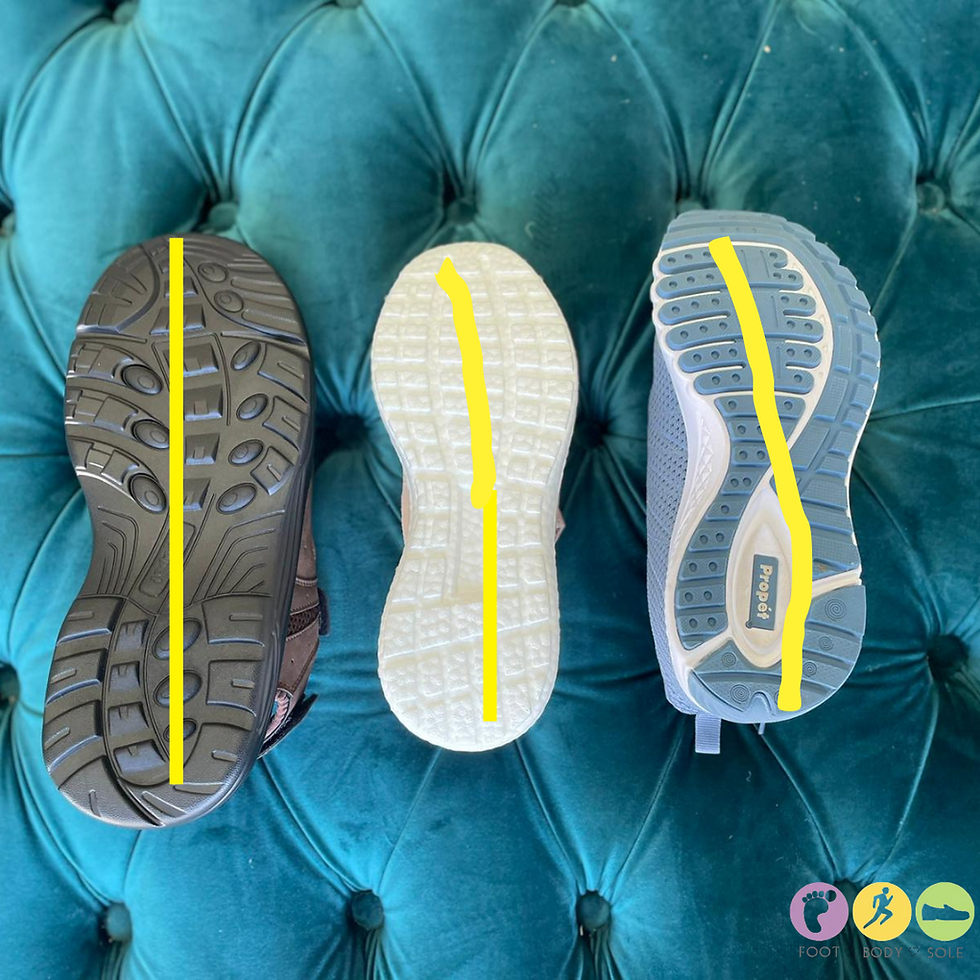How to look after your children’s feet
- Foot Body Sole
- Aug 25, 2020
- 2 min read

Children's feet should be given the attention they need as their feet will carry them for the rest of their lives! Children's foot care differs slightly from adult foot care as there are certain biomechanical, skin or nail conditions that younger patients may be more prone to having.
Tip #1 - Allow for movement
Babies and young children develop muscles by movement so do allow the feet to be free especially if they are only crawling or mainly indoors. Do put footwear or coverings on if it is cold, or they are beginning to walk and move around outdoors for protection.
Tip #2 - Make sure the foot coverings fit properly
Booties, socks and baby’s jumpsuits may often be too tight over the feet. This can cause ingrown toenails, or even constrict blood flow and affect the child’s circulation to the feet. Material should have natural fibres that allow the feet to breathe.
Tip #3 - Get the right foot coverings
As mentioned before, footwear is meant to provide protection for your child’s feet. Poor fitting shoes can lead to foot deformities, so it’s important that you get shoes that fit properly. Children don’t always complain when shoes start feeling tight, so it’s important you check that your child’s shoes still fit properly at least every 6 months.
Below are some footwear features for children in particular:
Shoes need to be the right length, breadth and depth. To make sure they are the right fit, it’s a good idea to have your child’s feet measured each time you are buying shoes. We offer free footwear assessments here at Foot Body Sole!
The shoe should fit the foot’s natural shape. The toes should be able to move freely and not be squashed. There should be at least one thumb’s width space between their longest toe and end of the shoe.
Shoes should be lightweight, flexible, and fit securely onto feet. They should be comfortable around the heel and not be too loose or too tight.
Avoid shoes made from synthetic materials, as children’s feet perspire and need to be able to breathe.
Tip #4 - Maintain good foot hygiene
Children’s feet need to be washed and dried very well everyday - especially between the toes. It is very easy for kids to develop a skin infection, like athlete’s foot or warts if their feet are constantly sweaty and moist.
Tip #5 - Keep toenails trimmed
Always cut children’s toenails in a straight line and never try to cut around the corners, as this can lead to ingrown toenails. Toenails that are too long can dig into other toes, or into the shoe, and cause a lot of discomfort.
Tip #6 - Watch their gait
Children may have intoeing gait, flat feet or other biomechanical issues that they grow out of. However, if it is associated with pain or just “looks funny” it is well worth seeing a podiatrist for a paediatric foot check.
We offer free Paediatric assessments every Friday from 9-10AM for children aged 0-12 here at Foot Body Sole! We also offer specialised children’s footwear and a capable team of podiatrists and trained footwear fitters to help you find the right fit.















Comments